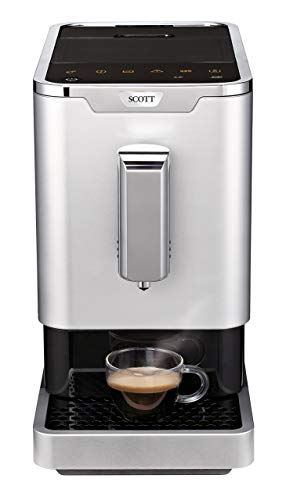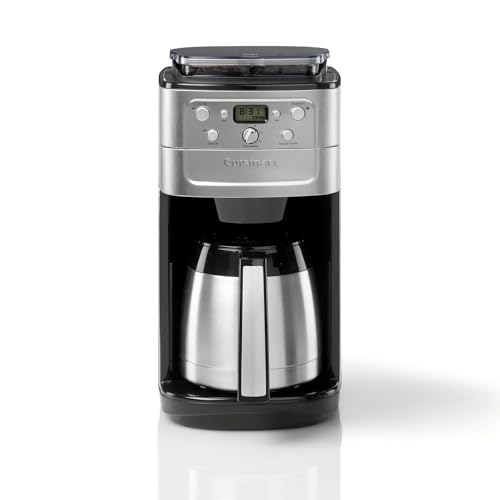17 Reasons Why You Shouldn't Be Ignoring Coffee Machine Coffee Beans
2024.11.28 03:44
 Choosing the Right Coffee Beans For Your Coffee Machine
Choosing the Right Coffee Beans For Your Coffee MachineMaking sure you use the right coffee beans can have significant impact on your cup of coffee. This is especially relevant for machines that utilize bean-to-cup technology.
They come with a hopper that you can fill with beans and they will automatically grind them into the proper size for extraction. They also have a chamber that holds hot brewing water.
Consistency
Bean-to-cup machines are excellent for making coffee. They can be used with the correct coffee beans to produce a delicious cup of coffee every time. To ensure your coffee is delicious, you must choose the right beans and roast them to perfection. It is also essential to determine the best grind size for your brew method. The grind size is crucial because it determines the speed at which water will pass and how much flavor is extracted. It is also crucial to choose a high-quality grinder, which will create an even grind that is suitable to your specific brewing process.
For all brewing methods, it is recommended that you make use of medium-coarse beans since this grind size will ensure an even extraction and a well-balanced taste profile. Dark roast beans can block the burrs of your grinder and are oily. This can cause an accumulation of coffee oils, which can cause a bitter cup of coffee.
A variety of factors can impact the quality of coffee beans, including grinding and storage. When beans are stored too long, they lose their moisture content as well as the aromas that make them so fragrant. This is why it is essential to purchase freshly roasted beans for your commercial coffee machine. It is also recommended to select a medium-dark roast as they are more suitable for bean-to-cup machines.
Selecting the best coffee beans for bean to cup machines beans for your coffee machine will also depend on your personal preferences and tastes. Some people prefer to use only Arabica beans while others prefer to use a blend. There are many roast levels to choose from that range from light to dark. Certain roasts are best for specific brewing techniques while others are suitable for any type coffee maker.
The consistency of the grind is another aspect that can impact the flavor of your coffee. A more fine grind allows water to move through it faster but it also can extract too much flavor. This is called over-extraction. The shape of the particles that make up the coffee ground is another consideration - if they are all of varying dimensions and shapes they could affect the way the water flows through the coffee and cause certain areas of the grounds to be over- or under-extracted.
Cost-effectiveness
It might seem costly to purchase your own machine however it's more economical in the long run than purchasing expensive pods. Additionally, you'll have more choices in terms of beans and won't be limited to the choices offered by a rental company. You'll also save money on maintenance and you won't have to worry about refills or service contracts or ongoing contracts.
There are many types of coffee machines on the market and the one that's most suitable for your workplace depends on your personal preferences and goals. For instance, a bean to cup coffee machine which to cup machine will provide you with the most authentic and freshest taste, whereas pod coffee machines offer ease of use and a variety of flavors at a more affordable cost.
Bean-to-cup machines are more expensive than pod machines, however they have many advantages including less waste and better coffee. They can be used with different beans which makes them a great option for offices looking to cater to a diverse workforce.
The beans you choose to use will determine the flavor and quality of your coffee. It is best to select medium roast beans, which are roasted sufficiently to produce complex flavors but not enough that they lose their original characteristics. It is also essential to ensure that the beans are freshly roasted, since stale or old beans can impact the final product.
You can save money by grinding your own beans, however you'll have to invest in the right tools and a grinder. It's worth it in the end because you'll be able alter the grind's size and strength to your liking and will have more control over the brewing process. You'll also avoid the additives and toxins that are commonly found in commercially produced ground coffees. You'll also reduce the amount of waste you generate as pods are expensive and difficult for recycling because of their plastic and aluminum components.
Variety
There are many kinds of coffee beans, each having a different flavor profile. They can be used in many recipes for drinks and food. Some coffee beans are roasting darker, which can change the aroma and taste. Some coffees are roasted lighter and can have a more fruity or floral flavors.
Choosing the right type of bean for your coffee machine can be a challenge. There are many factors to consider, including the origin of the bean, the method of processing, and the roast color. It's also important to select fresh coffee machine beans that have been roast recently. Beans that have been roasted too long can lose their aroma and flavor.
While there is no single type of coffee bean that is ideal for bean-to-cup machines, certain beans are more suitable than others. For example, dark roasts are ideal for drinks that are espresso-based, whereas light roasts are more suitable for filter coffee. A good rule of thumb is to play with various flavors and varieties until you find the ones that match your taste.
Bean-to-cup coffee machines are easy and fast. They are also versatile and quick. They can be used to make cappuccino, coffee and latte as well as other milky beverages. They are especially popular with those who prefer a hands-off experience. There is no need to worry about pressing the portafilter or tapping the cake tray. These machines can be purchased at most major retailers and are suitable for use at home.
Coffee is made from two simple ingredients which are water and coffee beans. Choosing high-quality coffee beans and using water that is filtered is essential to make a delicious cup of coffee. The type of coffee beans you select will impact the taste and aroma as well as the consistency of your cup of coffee.
It is not enough to be concerned about the quality of the beans and the flavor, but also the color and aroma of the roast. Light roasts have an ethereal flavor, whereas medium roasts have a balanced and full-bodied taste. Dark-roasted beans are ideal for espresso, while light and medium roasts are best suited to filter coffee machines and bean to cup coffee machine home-to cup machines.
If you're looking to prepare an espresso or drink a cup of filter coffee, you can get your desired outcome using a coffee bean grinder from De'Longhi. This bean-to-cup machine will grind whole coffee beans into fine ground and brew it in under a minute. It also makes an espresso cup, latte or chai tea.
Environment-friendly
Coffee is among the most consumed beverages in the world, so it's important to select sustainable alternatives. When it is about coffee, sustainability encompasses social, environmental, and economic aspects. When purchasing coffee beans, look for Fair Trade or UTZ certificates to ensure that farmers are getting an appropriate price for their harvest and aren't using harmful chemicals. These certifications can also help safeguard the environment.
Despite its many benefits, coffee is still a crop that consumes a lot of resources. The process of growing, processing and packaging of coffee beans generates greenhouse gasses, deforestation and water pollution. However the use of sustainably grown coffee beans and brewing techniques can reduce the negative effects. A recent life-cycle assessment (LCA) study looked at the impact of systems of brewing on the planet. Researchers found that the Moka pot, as well as single-serve capsules that have aluminum seals have the biggest environmental footprints. The former caused the most harm to nonrenewable resources, and the latter generated large quantities of waste.
According to the scientists who conducted the LCA, production and cultivation are the two main factors that impact the environment of a cup of coffee. Coffee cultivation is energy intensive and requires a lot of fertilizers, pesticides, and machines that release greenhouse gases. In addition it is a significant cause of deforestation in the Amazon basin.
In fact in a study conducted from 2021, it was determined that coffee brewed using the least sustainable methods created as much CO2 as the same amount cheese and was half as much as the emissions from beef. This was due to intensive fertilization irrigation, and the use of nitrous oxide emitting pesticides. However, the good news is that if we were to change to more sustainable practices, the negative impact could be significantly reduced.
You can make your coffee eco-friendly by using reusable cups or mugs, by purchasing Fair Trade or UTZ-certified beans and a reliable coffee maker. If you're planning on using coffee pods, make sure you choose ones that are 100% compostable. You can also purchase loose coffee grounds and use them to enrich your garden soil.
